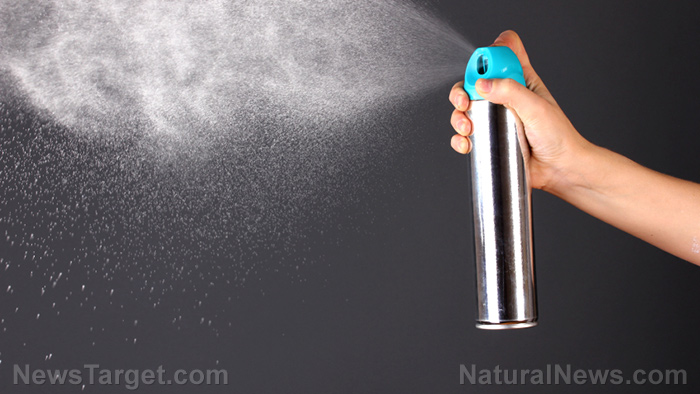
This is because air fresheners and fabric cleaners tend to contain volatile organic compounds (VOCs). These ingredients, which can be found in paints, flooring, and cleaning products too, do an excellent job of eliminating or masking odors. Unfortunately, VOCs can cause immense damage to your health, especially in an enclosed space where they have no room to escape.
Breathing in VOC-contaminated indoor air can then make you more prone to developing health issues such as asthma, chronic fatigue, sinus infections, and even cancer. And if you have allergies, then air fresheners can actually worsen them since the fragrances can trigger symptoms and aggravate them further. (Related: Most furniture is full of toxins which pollute your indoor air; here are 5 ways to eliminate the poison.)
So which VOCs should you be looking out for? The ones listed below are considered to be the worst offenders:
- Phthalates -- These are dispersants that have been linked to birth defects, developmental disorders, and reproductive issues. Despite the dangers associated with phthalates, they're a common ingredient in many air fresheners. A 2007 report by the Natural Resources Defense Council (NRDC) found that 12 out of 14 (or 86 percent) air fresheners had detectable levels of varying phthalates. Included in that group were air fresheners were labeled as “all-natural” or “unscented.”Adding to the problems caused by phthalates is the fact that manufacturers aren't required to list them under the ingredients. That means consumers could be unwittingly exposing themselves to phthalates with every spritz of their favorite air freshener.
- Formaldehyde -- A known human carcinogen, formaldehyde can be dangerous even when exposure is quick. Brief contact with low levels of formaldehyde can cause watery eyes, nausea, burning in the eyes and nose, and skin irritation. Higher levels can be even deadlier as greater concentrations of formaldehyde are said to result in spasms and ultimately, death. Electronic air fresheners are the worst of the lot, since 30 minutes of them being used can lead to you hitting 34 percent of the Critical Exposure Limit (CEL).
- 1,4 dichlorobenzene -- Also known as 1,4-DCB, this chemical is both a common air freshener ingredient and a pesticide registered under the Environmental Protection Agency (EPA). According to ToxinDetective.com, 1,4-DCB works by attacking your nose's receptors to block your sense of smell for a limited amount of time. So instead of masking odors, it instead renders you unable to smell. This is in addition to the reduced lung function and increased incidences of asthma, liver cancer, and kidney cancer attributed to its usage.
- Benzene -- The naturally sweet odor of this chemical makes it desirable for air fresheners. But the side effects far outweigh the benefits. Long-term benzene exposure can damage your bone marrow and cause your red blood cell count to drop by a significant margin.
Really though, if you want to freshen up your home, there are better ways to go about it. Place some essential oil in a spritzer or diffuser. Keep an open box of baking soda in the room to absorb any unpleasant smells. You could even simplify it by opening up a window and letting the bad odors out. All of these are better then bringing out air fresheners that will harm your health in the long run.
Discover the different chemicals that pose a danger to your health by going to Chemicals.news today.
Sources include:
Please contact us for more information.























